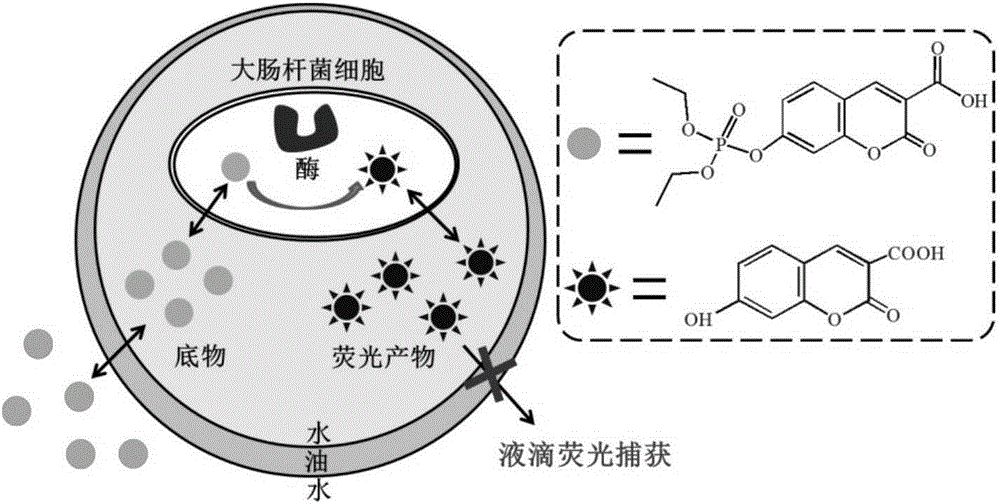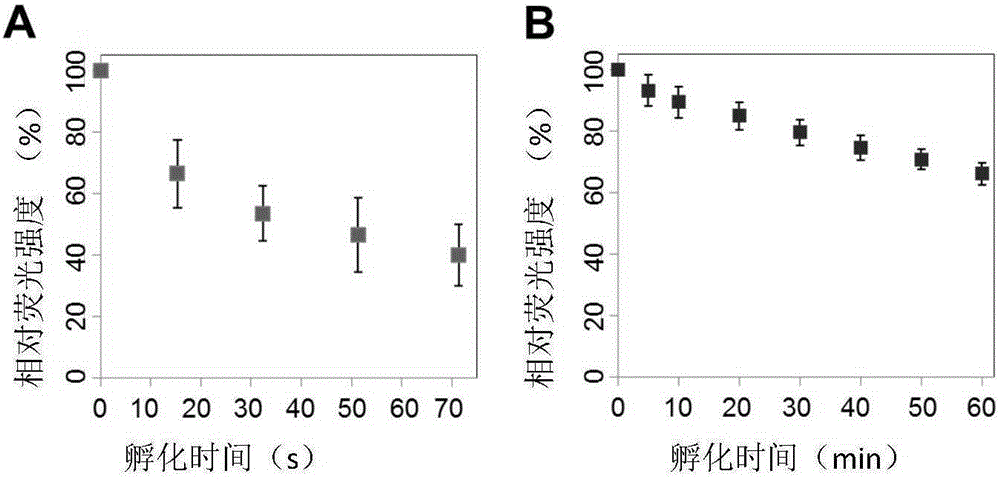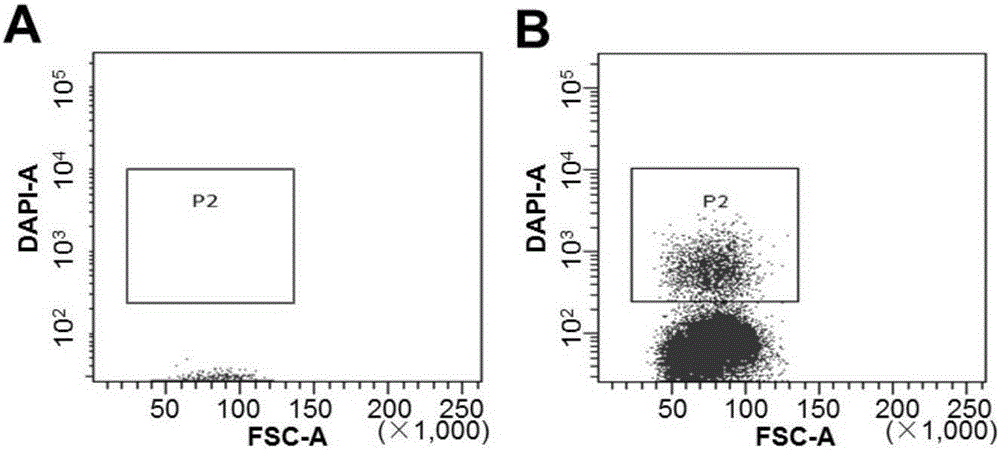Ultrahigh-flux screening method for phosphotriesterase
A phosphotriesterase and screening method technology, applied in the field of enzyme engineering, can solve problems such as inability to accurately reflect enzyme activity, affect screening accuracy and efficiency, etc. Effect
- Summary
- Abstract
- Description
- Claims
- Application Information
AI Technical Summary
Problems solved by technology
Method used
Image
Examples
Embodiment 1
[0043] Embodiment 1 substrate HCCA-diethyl phosphate (DEPHCCA) is synthesized
[0044] 7-Hydroxycoumarin-3-carboxylic acid (7-Hydroxycoumarin-3-carboxylic acid, HCCA, compound2,) was purchased from Sigma-Aldrich Company. The synthesis method is as follows:
[0045]
[0046] Dissolve 700mg HCCA (3.4mmol) and 568mg DBU (1,8-diazabicycloundec-7-ene, 3.74mmol) in 20mL DMF (dimethylformamide), slowly add 635mg benzyl bromide (3.74mmol ). The mixture was stirred at room temperature for 14 hours. TLC (EtOAc:PE=1:1) detection confirmed that the reaction was complete. 100 mL of water was added to the reaction system, filtered, and the precipitate was dried to obtain 700 mg of compound 3 (yield 70%). Dissolve 700mg of compound 3 (2.36mmol) in 30mL of a 1:1 mixture of carbon tetrachloride and tetrahydrofuran, slowly add 358mg of triethylamine (3.55mmol) at 0°C, and then add 391mg of compound 4 (diethyl phosphate , 2.84mmol). The mixture was stirred at room temperature for 3 hour...
Embodiment 2
[0048] The expression of embodiment 2GkaP and mutant thereof
[0049] Using GkaP and its mutants 26A8, 26A8Y, 26A8C ( Zhang, Y.; An, J.; Ye, W.; Yang, G.; Qian, Z.G.; Chen, H.F.; Cui, L.; Feng, Y. Appl. Environ. Microbiol. 2012, 78, 6647–6655. ) for experiments, similarly, other sources of GkaP and its mutants can also be used.
[0050] The enzyme gene was constructed in pET28a and expressed in the host E.coliBL21(DE3)CodonPlus. Expression conditions: Gradiently streak the GkaP strain on the LB agar plate containing kanamycin, culture and grow a single colony; pick a single colony and inoculate it in 5 mL of LB liquid medium containing kanamycin, 37°C, Cultivate at 220 rpm until OD600 is 0.6-0.8, add IPTG to a final concentration of 1 mM, and culture at 25° C. at 220 rpm overnight. Harvest bacteria: take 1mL of culture solution and centrifuge at 5000rpm for 2min, remove the supernatant, add 1mL of PBS (pH7.4) to resuspend, then centrifuge at 5000rpm for 2min, remove the ...
Embodiment 4
[0058] Example 4 Retention of Fluorescent Molecules in Droplets
[0059] Water-oil-water secondary micro-droplets were prepared by using PBS solution (pH7.4) containing fluorescent molecules HCCA or CYHC as the inner aqueous phase. The two kinds of micro-droplets were diluted 100 times with the external aqueous phase respectively, and then placed at room temperature (simulating the state of micro-droplets during IVC-FACS sorting), and samples were taken at regular intervals for flow cytometry fluorescence intensity measurement.
[0060]The droplet retention of carboxycoumarin HCCA was compared with cyanocoumarin CYHC (a fluorescent product of DEPCyC, purchased from Sigma-Aldrich). We used the solutions of the two compounds (100 μM, dissolved in PBS) as the inner aqueous phase to prepare w / o / w secondary micro-droplets, diluted 100 times with the outer aqueous phase and incubated at room temperature for different times to measure the fluorescence intensity of flow cytometry ana...
PUM
| Property | Measurement | Unit |
|---|---|---|
| Diameter | aaaaa | aaaaa |
Abstract
Description
Claims
Application Information
 Login to View More
Login to View More - R&D
- Intellectual Property
- Life Sciences
- Materials
- Tech Scout
- Unparalleled Data Quality
- Higher Quality Content
- 60% Fewer Hallucinations
Browse by: Latest US Patents, China's latest patents, Technical Efficacy Thesaurus, Application Domain, Technology Topic, Popular Technical Reports.
© 2025 PatSnap. All rights reserved.Legal|Privacy policy|Modern Slavery Act Transparency Statement|Sitemap|About US| Contact US: help@patsnap.com



